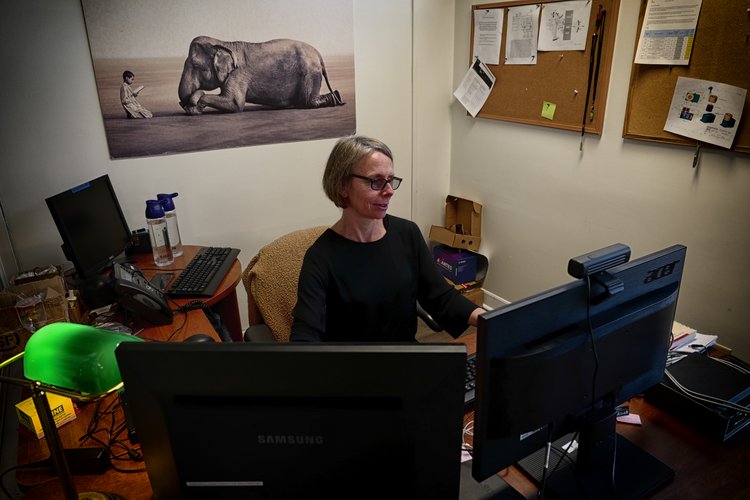The Basic Principles Of Uv/vis/nir
The Basic Principles Of Uv/vis/nir
Blog Article
Not known Factual Statements About Uv/vis
Table of ContentsSome Known Details About Spectrophotometers Things about Uv/visThe 6-Minute Rule for Circularly Polarized LuminescenceFacts About Uv/vis Revealed6 Simple Techniques For Circularly Polarized Luminescence

Although spectrophotometry is most commonly used to ultraviolet, visible, and infrared radiation, contemporary spectrophotometers can question wide swaths of the electro-magnetic spectrum, consisting of x-ray, ultraviolet, visible, infrared, and/or microwave wavelengths. Spectrophotometry is a tool that depends upon the quantitative analysis of particles depending upon just how much light is absorbed by colored compounds.
Some Of Uv/vis/nir
A spectrophotometer is typically utilized for the measurement of transmittance or reflectance of solutions, transparent or nontransparent solids, such as refined glass, or gases. Although lots of biochemicals are colored, as in, they take in noticeable light and for that reason can be determined by colorimetric procedures, even colorless biochemicals can frequently be transformed to colored substances suitable for chromogenic color-forming responses to yield substances suitable for colorimetric analysis.: 65 However, they can also be developed to measure the diffusivity on any of the noted light varieties that usually cover around 2002500 nm utilizing various controls and calibrations.
An example of an experiment in which spectrophotometry is used is the determination of the stability constant of a service. A particular chemical reaction within a solution might take place in a forward and reverse instructions, where reactants form products and products break down into reactants. At some point, this chemical reaction will reach a point of balance called an equilibrium point.
How Uv/vis can Save You Time, Stress, and Money.
The amount of light that goes through the option is a sign of the concentration of particular chemicals that do not permit light to go through. The absorption of light is due to the interaction of light with the electronic and vibrational modes of particles. Each type of particle has a private set of energy levels connected with the makeup of its chemical bonds and nuclei and hence will soak up light of specific wavelengths, or energies, leading to unique spectral residential or commercial properties.
The usage of spectrophotometers spans various clinical fields, such as physics, materials science, chemistry, biochemistry. spectrophotometers, chemical engineering, and molecular biology. They are extensively used in many industries including semiconductors, laser and optical manufacturing, printing and forensic examination, along with in laboratories for the research study of chemical compounds. Spectrophotometry is typically used in measurements of enzyme activities, decisions of protein concentrations, decisions of enzymatic kinetic constants, and measurements of ligand binding reactions.: 65 Ultimately, a spectrophotometer is able to identify, depending on the control or calibration, what substances are present in a target and exactly just how much through estimations of observed wavelengths.
This would come as a service to the formerly developed spectrophotometers which were unable to soak up the ultraviolet correctly.
Not known Facts About Uv/vis
It would be found that this did not provide satisfactory results, therefore in Model B, there was a shift from a glass to a quartz prism which permitted much better absorbance outcomes - UV/Vis/NIR (https://hubpages.com/@olisclarity1). From there, Model C was born with a change to the wavelength resolution which ended up having 3 units of it produced
It was produced from 1941 to 1976 where the cost for it in 1941 was US$723 (far-UV devices were a choice at extra cost). In the words of Nobel chemistry laureate Bruce Merrifield, it was "probably the most important navigate to this site instrument ever developed towards the improvement of bioscience." Once it ended up being terminated in 1976, Hewlett-Packard created the first commercially readily available diode-array spectrophotometer in 1979 understood as the HP 8450A. It irradiates the sample with polychromatic light which the sample absorbs depending on its properties. It is transmitted back by grating the photodiode selection which spots the wavelength region of the spectrum. Because then, the production and implementation of spectrophotometry devices has actually increased immensely and has actually become one of the most innovative instruments of our time.

The 45-Second Trick For Circularly Polarized Luminescence
The grating can either be movable or repaired.
In such systems, the grating is fixed and the intensity of each wavelength of light is determined by a various detector in the selection. When making transmission measurements, the spectrophotometer quantitatively compares the portion of light that passes through a reference option and a test option, then digitally compares the intensities of the 2 signals and calculates the portion of transmission of the sample compared to the referral requirement.

Report this page